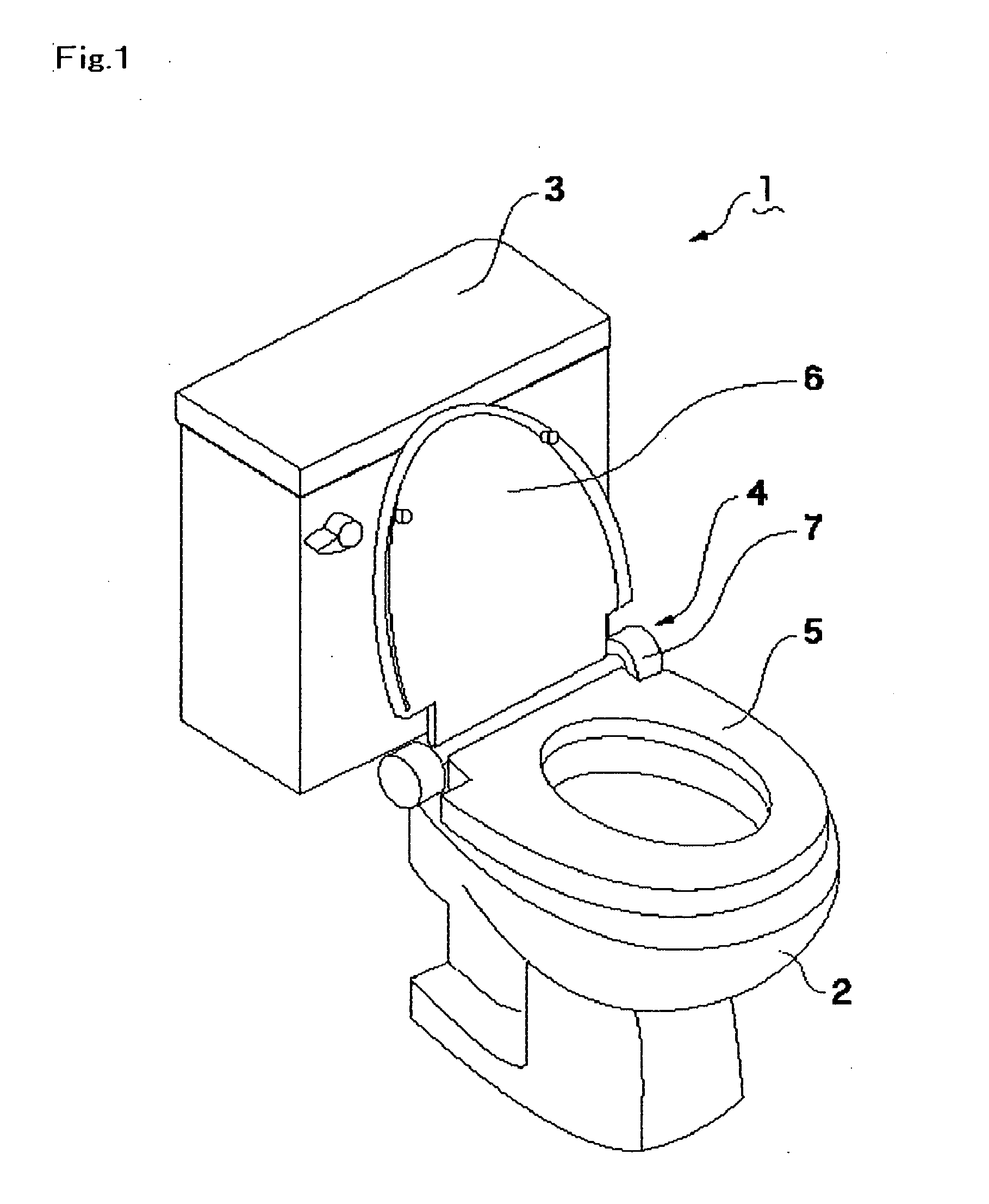[0007] In view of the problems described above, it is an object and
advantage of the present invention to provide a damper device which is capable of preventing a casing and a cover from increasing its
diameter in a radial direction by fixing the casing and the cover each other with
ultrasonic welding and capable of restricting the dispersion of damper operation by stabilizing a gap space between a turnable shaft and the end face of the cover, and to provide a manufacturing method for a damper device.
[0008] In order to achieve the above object and
advantage, according to an embodiment of the present invention, there is provided a damper device including a casing provided with an inner circumferential surface formed in a cylindrical shape, a shaft body (turnable shaft) located in the cylindrical space of the casing and supported in a freely turnable manner, a cover which seals the casing, and viscous fluid stored in a sealed space formed between the shaft body and the casing. The casing is provided with a first and a second engagement parts engaging with the cover and the cover is welded with the first engagement part by
ultrasonic welding and the second engagement part is used as a positioning part in an axial direction for the cover.
[0009] In this case, it is preferable to be constructed such that the shaft body is provided with a large
diameter part which is positioned on the sealed space side of the first and the second engagement parts of the casing and an O-ring for sealing is disposed between the cylindrical inner circumferential surface of the casing and the large
diameter part of the shaft body. According to the construction described above, sealing between the inner circumferential surface of the casing and the shaft body is performed on the sealed space side of the casing from the welded portion by ultrasonic
welding and the positioning part of the cover in the axial direction which are the first and the second engagement parts. Therefore, the sealed space between the shaft body and the casing can be surely formed.
[0010] In addition, it is preferable to be constructed such that the cylindrical inner circumferential surface of the casing includes a first inner circumferential surface which forms the sealed space in which the viscous fluid is stored, a second inner circumferential surface which faces the large diameter part of the shaft body, and a third inner circumferential surface along which an insert part formed in the cover is inserted into the casing. Further, a first stepped part is formed between the first inner circumferential surface and the second inner circumferential surface so that the second inner circumferential surface has a larger diameter than a diameter of the first inner circumferential surface, and a second stepped part is formed between the second inner circumferential surface and the third inner circumferential surface so that the third inner circumferential surface has a larger diameter than a diameter of the second inner circumferential surface. According to the construction described above, since the second stepped part is formed between the second inner circumferential surface and the third inner circumferential surface, effects due to the ultrasonic
welding can be
cut off at the second stepped part and effects to the sealing between the inner circumferential surface of the casing and the large diameter part of the shaft body can be prevented. In addition, since the first stepped part is also formed between the first inner circumferential surface and the second inner circumferential surface, effects due to the ultrasonic
welding are not transmitted to the sealed space where the viscous fluid is stored.
[0011] In accordance with an embodiment of the present invention, it is preferable that the cover is engaged with the second engagement part, i.e., the positioning part through a
washer which is made of material different from the cover. According to the construction described above, vibration energy at the time of ultrasonic welding is
cut off by the
washer made of a different material from the cover and thus transmission of the vibration energy to the casing can be prevented. Therefore, since the casing is not melted and crushed in the axial direction, the cover can be prevented from being pushed furthermore in the axial direction. For example, in the case that the cover and the casing are made of PBT, the
washer may be formed by using PTFE. Preferably, when the washer is made of
metal, transmission of vibration energy to the casing can be surely prevented.
[0012] In accordance with an embodiment of the present invention, it is preferable that the washer is disposed so as to be adjacent to the end face in the axial direction of the shaft body. According to the construction described above, since a washer is disposed at a boundary portion between the end face of the shaft body and the cover, concentration of vibration energy to the boundary portion is prevented and thus welding between the end face of the shaft body and the cover can be surely restricted. Further, wear between the end face of the shaft body and the cover can be prevented by the washer.
 Login to View More
Login to View More  Login to View More
Login to View More 


